Seven Practices to Guide Funding and Programming
By Linda Kekelis and Ron Ottinger
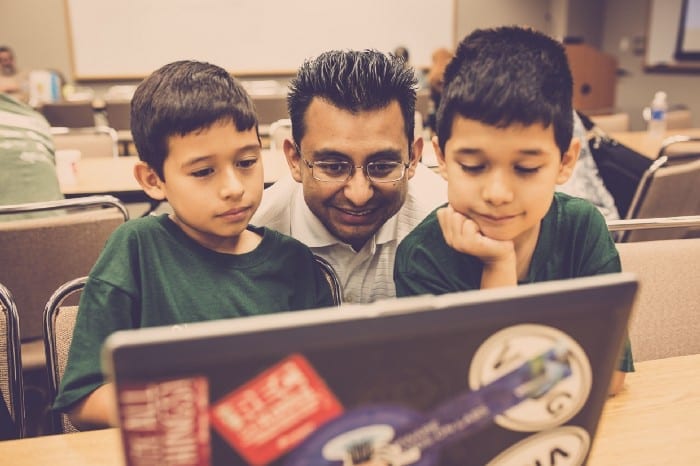
Photo credit: Youth Code Jam
Family engagement is crucial now more than ever. As we respond to the disruptions created by COVID-19, we must plan for the future — a future that does a far better job of distributing opportunities. As youth return to schools and afterschool programs, we need to invest in addressing the long-term impacts of this pandemic. We must change the status quo. Now. We must first and foremost work hardest for those families most impacted and most vulnerable.
When schools, libraries, community centers, childcare facilities, and out-of-school programs were closed this spring, families were left to care for their children’s physical, emotional, and educational needs in unprecedented ways. The start of this school year brings new and changing ways of schooling. For some, it’s a return to the classroom with safety practices in place. For others it’s virtual learning or some combination of at-home and in-school instruction. This is hard for every family. It’s particularly hard for families that were struggling to meet their basic needs before COVID-19 hit. How can parents and caring adults step up to support their child’s learning when they are struggling to put food on the table, pay the rent, or deal with health challenges?
In response to COVID-19 there are lots of great educational resources shared and repurposed for families at home. It’s a big challenge to navigate through online offerings, daily activities, and parenting advice. We know that these resources and services are not evenly accessible across communities. Impacts are not evenly distributed. Cross-sector collaboration is more important than ever in coordinating support for families. Visit our blog with five practices to address this challenge and support families, especially those most vulnerable and impacted.
Now more than ever, STEM Next Opportunity Fund is committed to dismantling the opportunity gap in STEM by advocating for efforts that first and foremost ensure equity and access. We have championed quality programming for all youth both as a funder and advocate for out-of-school-time programs and professional development for national youth-serving organizations. STEM Next’s Family Engagement Project elevates the critical role of families in supporting youth — particularly girls and youth from populations underrepresented in STEM — to pursue and persist in STEM. In Changing the Game in STEM With Family Engagement: A White Paper for Practitioners and Field Leaders to Empower Families in STEM we highlight promising practices that support youth’s interest, persistence, and achievement in STEM.
During this unprecedented time in education, where the role of families has been elevated to “critical partner,” funders have the unique opportunity to reflect and adjust their strategies. With The Essential Funders’ Guide to STEM-Focused Family Engagement: Seven Strategies to Support Families in Advancing Young People’s Interests, Persistence, and Achievement we elevate the imperative of capacity building for family engagement. These essential elements — capacity building of relationships, resources, and professional development — require sustained support from private, corporate, and individual funders.
In this blog we share seven practices to support families in this next generation of family engagement. Guiding questions are written to help funders as they prioritize their investment. They can also be used as a planning tool for those providing STEM services to families. Examples from the field offer ideas for putting these practices into action and how organizations pivoted in response to the needs of families that have been created by COVID-19.
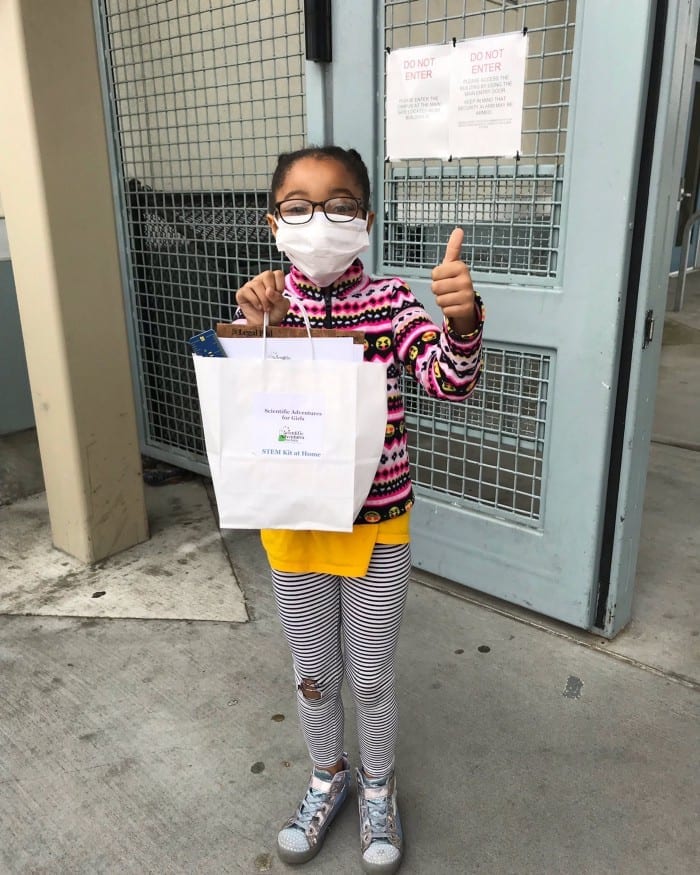
Photo credit: Scientific Adventures for Girls
1.Listening and learning from families
- Do activities respond to what parents have said they need?
- Are relationships built with parents that will be sustained over time?
In practice: Scientific Adventures for Girls reaches out to every family with phone calls, texts, and emails that share weekly activities and questions to guide conversations within families. While afterschool programs were shut down, staff called and texted families to check in and provide STEM kits for the home that could be picked up with lunches and homework. In this new school year, Scientific Adventures for Girls is delivering virtual STEM programming for girls, and providing STEM kits that are easy and ready to use to all families at home. They will continue with a weekly email and also provide a monthly STEM resource email with STEM mini lessons, access to STEM Storytime and female STEM role model videos.
2.Building families’ capacity to encourage and support
- Do activities help families overcome their fears and anxieties and tap into their existing knowledge and skills about STEM?
- Do parents understand how to integrate STEM into their everyday routines with activities with accessible materials for use at home?
In practice: Ready4K crafts text messages with short, simple tips that map onto daily routines and explain how these practices build skills and set the stage for learning. This approach is highly successful in empowering parents and is especially important in being responsive to current levels of stress felt by parents. Ready4K has an excellent webinar on how best to get family feedback from afar which is especially helpful in these times. Ready4K resources are available in English, Spanish, Chinese, Vietnamese, and Arabic.
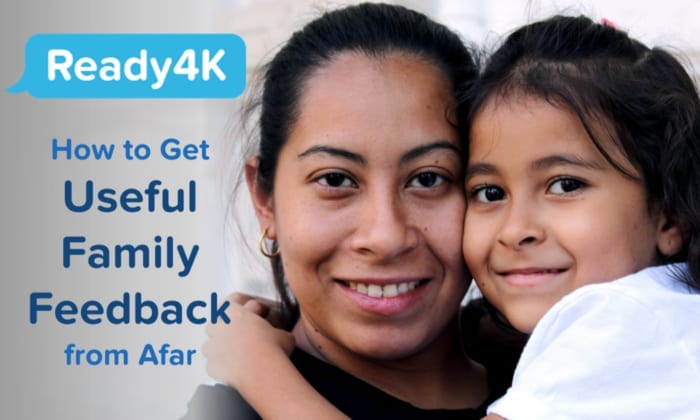
Photo credit: Ready4K
3. Understanding the context: Race/ethnicity, gender, ability
- Are parents engaged in ways that are culturally responsive?
- Do program materials include photos of youth with disabilities and language that explicitly welcome all youth and signal that their parents will be supported in the program?
In practice: Youth Code Jam shows parents that their kids can have a future in technology. During workshops, parents see how their children who are neurodiverse can be successful at coding and acquiring leadership skills for personally and professionally rewarding careers. Youth Code Jam helps parents see a career pathway and the next steps to get there. Coding activities are available in English and Spanish. Youth Code Jam has expanded its reach with virtual programs and training for educators.
4. Sharing information about STEM pathways
- Is information provided to families and young people on the STEM resources available in their community?
- Are connections to STEM role models made available?
In practice: The New York Hall of Science helps families learn about academic coursework and pathways to STEM-related careers, such as internship opportunities and paid summer programs. Especially for first-generation families with both high needs and high aspirations, connecting museum activities to STEM careers helps make pathways to STEM opportunities more explicit. While the Museum is closed, NYSCI is offering at-home STEM games, experiments, and activities. NYSCI also developed a COVID-19 exhibit that is available online in English and Spanish.
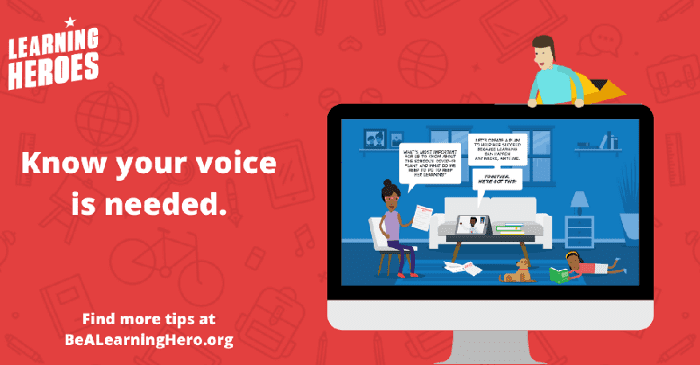
Photo credit: Learning Heroes
5. Supporting STEM academic achievement
- Do parents know how to productively engage with their children’s teachers to monitor and support their children’s in-school STEM learning?
- Do young people and families understand the academic pathways necessary to prepare them for entrance into post-secondary STEM programs and what families need to do to ensure that their children have completed the prerequisites to take their desired next step?
In practice: Learning Heroes offers research and resources to support parents and educators in children’s educational success. The research identifies what parents know and what gaps there are in their understanding of their children’s progress in school. Learning Heroes developed two new resources for this unique school year to help with remote learning and redefined relationships between home and school — questions for parents to ask teachers and parent-teacher planning tool.
6. Empowering parents and guardians
- Are parents introduced to one another and to a supportive peer community?
- Are parents connected to organizations and resources advocating for improved access to rigorous STEM curriculum and STEM programs?
In practice: Digital Youth Divas lifts up strategies that build confidence. Now more important than ever, this helps parents understand the many ways in which they are already supporting their child. These include inviting their child to show them what they are learning; sharing a skill like cooking, sewing, or working with tools; asking questions, and searching for answers together. Digital Youth Divas responded to COVID-19 with a variety of offerings to families that include email updates, Zoom socials and showcase events, iPad loaner program, and a parent portal to view and comment on youth work.
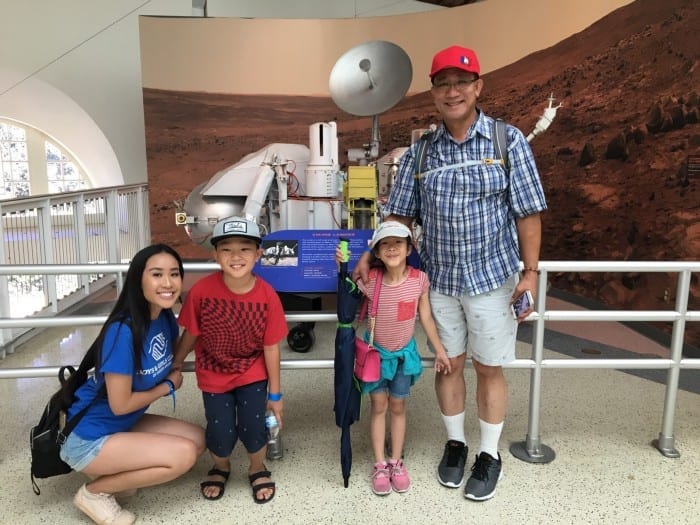
Photo credit: Boys and Girls Clubs of Garden Grove
7. Promoting organizational development
- Do the recruitment, professional development, and staff evaluation practices emphasize skills necessary for effective family engagement?
In practice: Imagine Science of Orange County supported a yearlong community of practice across Boys and Girls Clubs of Garden Grove and Huntington Valley, Girls Inc. of Orange County, and YMCA of Anaheim. Building upon research+practice resources, these teams shared lessons learned, and discussed new ways to support their staff in deepening family engagement. While in-person programs were on hold, they called families, gathered input, and made plans to deepen their engagement with families. They are using the seven strategies and guiding questions to help set goals for family engagement this school year.
Our Call for Collective Action
COVID-19 has heightened the shortcomings of educational opportunities across our communities. This is our moment to come together, reimagine the possibilities, and advance research, programming, and policy for the next generation of family engagement. This will take all of us engaged in collective work to ensure that every family has access to the opportunities to support their child at home and to broker opportunities in their communities.
Linda Kekelis, PhD, is an advisor for STEM Next Opportunity and founder and former CEO of Techbridge Girls. Family engagement has been a passion for Linda and at the center of the research and programs she has led. lkekelis@gmail.com @LindaKekelis
Ron Ottinger is Executive Director of STEM Next Opportunity Fund and former co-chair of the national STEM Funders Network and the National STEM Learning Ecosystem Initiative. rlottinger@stemnext.org @STEMNext

